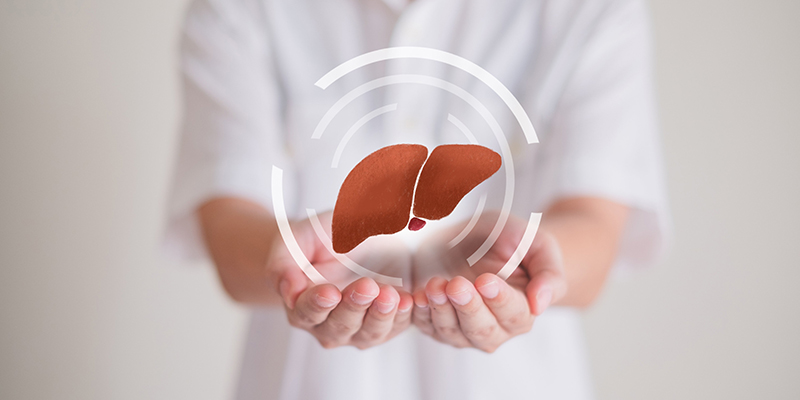Health & medical treatment
What Are The Risk Factors For Liver Cancer?
Liver cancer has surfaced as a critical challenge on a global scale, with its prevalence witnessing a troubling rise. This increasing incidence highlights the urgency of addressing liver cancer, prompting public health officials and communities to heighten awareness and prioritize preventative measures. Currently, liver cancer is among the foremost causes of cancer-related deaths, driven by various factors including viral infections, lifestyle choices, and environmental exposures. Given the mounting burden of the disease, gaining a clear understanding of its risk factors is essential for effective prevention, timely diagnosis, and ultimately, saving lives.
Liver cancer has surfaced as a critical challenge on a global scale, with its prevalence witnessing a troubling rise. This increasing incidence highlights the urgency of addressing liver cancer, prompting public health officials and communities to heighten awareness and prioritize preventative measures. Currently, liver cancer is among the foremost causes of cancer-related deaths, driven by various factors, including viral infections, lifestyle choices, and environmental exposures. Given the mounting burden of the disease, understanding its risk factors is essential for effective prevention, timely diagnosis, and, ultimately, saving lives.

Understanding Liver Cancer
Liver cancer is a severe condition defined by the unregulated growth of abnormal cells within the liver. It primarily falls into two categories: primary and secondary liver cancer. Primary liver cancer starts in the liver itself, with hepatocellular carcinoma being the predominant form. In contrast, secondary liver cancer occurs when cancer cells from other parts of the body migrate to the liver, often indicating more advanced disease progression.
The liver in the upper right abdomen plays numerous vital roles—metabolizing nutrients, detoxifying harmful substances, producing bile for digestion, and regulating blood sugar levels. This essential organ's functions render it particularly vulnerable to damage from alcohol, toxins, and viral infections, which can escalate the risk of developing cancer. Therefore, early detection and intervention are critical, as they can significantly enhance survival rates and health outcomes. Regular screenings and an awareness of risk factors enable healthcare professionals to identify liver cancer in its nascent stages, fostering timely treatment.
Overview Of Risk Factors
The risk factors associated with liver cancer can be categorized into controllable and uncontrollable factors. Controllable risk factors result from individual choices, such as dietary habits, alcohol consumption, and physical activity levels. By opting for healthier lifestyle habits, individuals have the potential to reduce their cancer risk significantly. Uncontrollable risk factors include inherited genetic traits, advancing age, and exposure to specific infectious agents, which are innate to individuals and cannot be altered. Recognizing controllable and uncontrollable risk factors is crucial for implementing effective awareness and prevention strategies, promoting early diagnosis, and managing liver cancer treatment. This understanding empowers individuals to take charge of their health proactively.
Viral Infections
Hepatitis B Virus (HBV) and Hepatitis C Virus (HCV) are substantial contributors to the global liver cancer burden. Globally, approximately 292 million individuals are estimated to live with chronic HBV infection, which significantly heightens the likelihood of developing liver cancer. According to the World Health Organization, around 60% of liver cancer cases can be traced back to HBV, attributable to its capacity to inflict chronic infections that culminate in liver cirrhosis and cancer over time.
On the other hand, HCV is mainly transmitted through blood-to-blood contact, often seen in situations like shared needles among intravenous drug users and, less frequently, through sexual activity. Presently, about 71 million people worldwide are affected by HCV infection, with approximately 20% to 30% of those individuals progressing to cirrhosis or liver cancer over two to three decades. The persistent inflammation resulting from chronic HBV and HCV infections leads to extensive liver damage, creating an environment conducive to the development of cancerous cells.
Overall, addressing these viral infections through preventative strategies, vaccination (for HBV), and early treatment of HCV can significantly lower liver cancer incidence. Introducing innovative antiviral therapies makes prompt intervention more feasible than ever, stressing the importance of awareness and regular screening in at-risk populations.
Alcohol Consumption
Excessive alcohol consumption poses a serious threat to liver health, often leading to dire conditions such as cirrhosis—characterized by progressive scarring of the liver tissue. The World Health Organization (WHO) estimates that close to 3 million deaths globally are attributed annually to alcohol-related causes, underscoring the vastness of this public health issue. Long-term alcohol abuse causes liver inflammation, and as this damage accumulates, the organ's ability to function effectively is compromised. Notably, individuals who have cirrhosis face a 10 to 20 times greater risk of liver cancer compared to those with healthy livers. In the United States, roughly 41% of liver cancer cases are associated with excessive alcohol consumption, further pointing out the significant correlation between high alcohol intake and elevated liver cancer risk.

Obesity And Diabetes
Obesity emerges as a critical risk factor linked to non-alcoholic fatty liver disease (NAFLD), which can progress into severe liver complications, including cirrhosis and hepatocellular carcinoma (HCC)—the most prevalent liver cancer form. Recent studies reveal that around 25% of individuals diagnosed with NAFLD may eventually develop HCC or cirrhosis, highlighting the necessity for vigilance in managing weight. Furthermore, existing research indicates that diabetes exacerbates the risk for liver cancer, with individuals diagnosed with diabetes facing a 1.5 to 3 times higher risk of developing liver cancer compared to their non-diabetic peers. The interplay between obesity, insulin resistance, and liver inflammation significantly contributes to carcinogenesis. Alarmingly, the World Health Organization reports that over 1.9 billion adults were classified as obese in 2021, emphasizing the urgent need for increased awareness and preventative action to protect liver health.
Aflatoxin Exposure
Aflatoxins, toxic compounds produced by certain moulds, predominantly Aspergillus species, pose significant health risks as they often contaminate agricultural products such as grains, nuts, and seeds. In many developing countries, crops, including maize and peanuts, frequently bear the brunt of these toxins, raising serious health concerns. These carcinogenic agents are closely linked to liver cancer due to their ability to induce DNA damage and facilitate tumour formation, thus escalating cancer risks. Regions across sub-Saharan Africa and parts of Asia demonstrate alarming levels of aflatoxin exposure, which correlates strongly with elevated liver cancer incidences. Familiar sources of aflatoxins, such as contaminated cornmeal, rice, and peanuts, amplify the need for effective agricultural practices and food safety measures. Consumers should remain vigilant regarding their food sources, as chronic exposure to aflatoxins through diet significantly increases the likelihood of developing liver cancer.
Genetic Predispositions
Genetic predispositions critically influence liver cancer risk, mainly through hereditary disorders like hemochromatosis and Wilson's disease. Hemochromatosis is a genetic condition that results in excessive iron accumulation, leading to liver damage and significantly raising the risk of liver cancer—individuals with this disorder face a 20-fold increased risk compared to the general population. Likewise, Wilson's disease, which results in copper buildup in the body, also heightens cancer risk, mainly when left untreated.
Family history plays a vital role in assessing liver cancer susceptibility. Research suggests that individuals with family histories of liver cancer have two to three times greater odds of developing the disease themselves. Thus, understanding these hereditary connections helps individuals make informed healthcare decisions, seek regular screenings, and enhance early detection and prevention strategies against liver cancer.
Environmental Factors: The Hidden Threat To Liver Cancer Risk
Environmental elements, such as exposure to toxic chemicals and air pollution, considerably elevate liver cancer risk. For example, vinyl chloride—a chemical used in plastic production—has been linked to liver damage and carcinogenic activity. Evidence indicates that exposure to vinyl chloride can lead to a rare type of liver cancer called angiosarcoma, emphasizing the severe health consequences connected to such chemicals.
Furthermore, air pollution, rife with carcinogenic agents, also plays a crucial role in increasing liver cancer risk. Urban settings with high levels of particulate matter and industrial emissions often showcase a correlation with rising liver cancer rates. The public health implications of these environmental factors are alarming, suggesting an urgent necessity for stricter regulations on pollutants and the promotion of clean air initiatives. By addressing these environmental threats, communities can better safeguard public health from the looming perils of liver cancer.
Taking Charge Of Liver Health
A comprehensive understanding of the risk factors for liver cancer—ranging from viral infections and alcohol consumption to obesity and aflatoxin exposure—underscores the importance of early detection and preventive measures. Elevating awareness about these risks can encourage individuals to embrace healthier lifestyles and pursue regular medical check-ups. Implementing preventive strategies, including vaccination for viral hepatitis and adopting a balanced diet, can significantly mitigate these risk factors. As our grasp of liver cancer deepens, we must take proactive steps toward health and well-being, ensuring that we prioritize liver health today for a healthier tomorrow.



